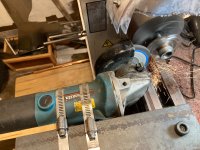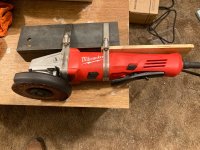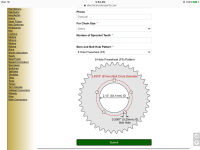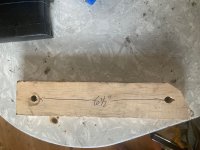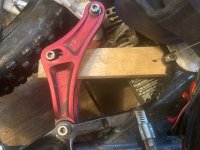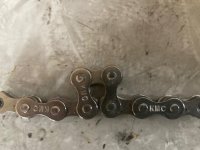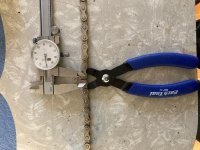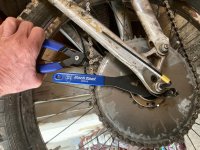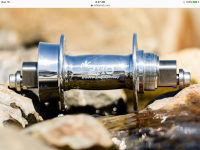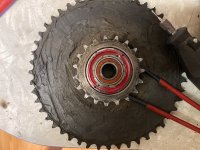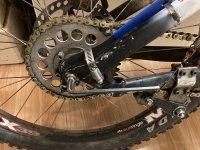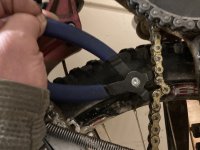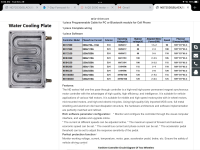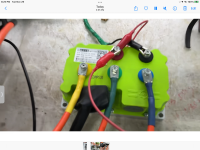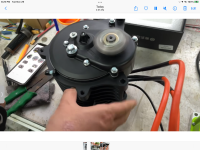Is a Short Chain Snubbing Your Rear Suspension Travel?
The QS 3000 motor when bike mounted does fine as a one speed. Hopefully your QS3000 mount is on a full suspensions bike? Big deraillleurs can handle some 18 chain links of slack -- about 9". If you have kept the OEM derailleur in use for chain slack you likely are not snubbing full suspension motion. It is when you ride off trail that derailleurs get torn off or severely bent necessating a substitute chain slack remover. Most mtn bike trails are too well groomed for a derailleur snag. Dirtbike trails are poorly groomed by mtn bike standards.
Probably for most mtn bike rear suspension systems the minimun chain length changes as the rear axle travels about the BB axle.The BB concentric suspension systems like on a Kona Stinky do not change minimun chain length as the swingarm rotates about the BB axle. This feature has no anti sag so during starts you get a sag or unweighting when throttling -- less normal force on rear tire -- traction? If you do not have concentric rotation suspension and have removed the derailleur you will need a chain tensioner to keep an almost snug chain on an edirtbike.

In the above photo the chain may appear to be almost rubbing the bottom of the lower stay. It's actual pathway is behind the lower stay.
These single pulley chain tensioners for keeping a chain on line with the rear sprocket work best when placed very close or next to the rear sprocket. Their main drawback is they can handle effectively a max of about 1 1/2 links of chain slack when used on severely bouncy terrain. Further more this arm attachment location will cause the swing arm action to bump the lower stay if there are about 2 links of chain slack.
Wider chains do stay on better than a narrower ones of the same pitch. Likely a minimum size chain for the QS 3000 is #415H chain or the motorcycle versions of this chain. The chain slack problem is further compounded because there are no half links for this chain. As a sideline issue, half links make more noise than regular link connections.
If you do not have enough chain slack for your suspension, then the chain at some point in suspension travel will get tight. Once tight, the chain is not rigid but acts as a stiffer spring than your suspension would normally have if there were slack. The chain as a spring is not likely to break but it does pull on the BB axle and, if you have a standard 5/8" square end shaft, a one time Big Air drop could bend the axle very slightly causing a wobble or out-of-plane rotation for the double flange BB hub -- more noise from the cyclic loosening and tightening of the chain generating warbling noise cadences.
The minimum amount of chain slack in the system will make for a much higher likelihood of the chain staying on the sprockets. More on how to measure and optimize chain slack next post(s).


